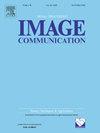海洋生态系统中基于深度网络的水下图像增强多鱼跟踪
IF 2.7
3区 工程技术
Q2 ENGINEERING, ELECTRICAL & ELECTRONIC
引用次数: 0
摘要
跟踪海洋生物在了解水下物种的迁徙模式、运动和种群增长方面起着至关重要的作用。基于深度学习的鱼类跟踪网络已经得到了积极的研究和开发,并取得了可喜的成果。在这项工作中,我们提出了一个端到端深度学习框架,用于在无约束的海洋环境中跟踪鱼类。我们方法的核心创新是基于暹罗的架构集成了图像增强模块,旨在有效地测量外观相似性。增强模块由卷积层和压缩激励块组成,对退化和干净的图像对进行预训练,以解决水下失真问题。在Siamese框架中利用这种增强的特征表示来计算外观相似性分数,并使用基于鱼的运动模式的预测分数进一步改进。为了确保跟踪的鲁棒性,我们结合了外观相似性评分、预测评分和基于iou的相似性评分,使用匈牙利算法生成鱼类轨迹。我们的框架在Fish4Knowledge数据集上显著减少了35.6%的ID切换,在GMOT-40鱼类类别上显著减少了3.8%的ID切换,同时保持了很高的跟踪精度。这项工作的源代码可以在这里获得:https://github.com/srimanta-mandal/Multi-Fish-Tracking-with-Underwater-Image-Enhancement。本文章由计算机程序翻译,如有差异,请以英文原文为准。
Multi-fish tracking with underwater image enhancement by deep network in marine ecosystems
Tracking marine life plays a crucial role in understanding migration patterns, movements, and population growth of underwater species. Deep learning-based fish-tracking networks have been actively researched and developed, yielding promising results. In this work, we propose an end-to-end deep learning framework for tracking fish in unconstrained marine environments. The core innovation of our approach is a Siamese-based architecture integrated with an image enhancement module, designed to measure appearance similarity effectively. The enhancement module consists of convolutional layers and a squeeze-and-excitation block, pre-trained on degraded and clean image pairs to address underwater distortions. This enhanced feature representation is leveraged within the Siamese framework to compute an appearance similarity score, which is further refined using prediction scores based on fish movement patterns. To ensure robust tracking, we combine the appearance similarity score, prediction score, and IoU-based similarity score to generate fish trajectories using the Hungarian algorithm. Our framework significantly reduces ID switches by 35.6% on the Fish4Knowledge dataset and 3.8% on the GMOT-40 fish category, all while maintaining high tracking accuracy. The source code of this work is available here: https://github.com/srimanta-mandal/Multi-Fish-Tracking-with-Underwater-Image-Enhancement.
求助全文
通过发布文献求助,成功后即可免费获取论文全文。
去求助
来源期刊

Signal Processing-Image Communication
工程技术-工程:电子与电气
CiteScore
8.40
自引率
2.90%
发文量
138
审稿时长
5.2 months
期刊介绍:
Signal Processing: Image Communication is an international journal for the development of the theory and practice of image communication. Its primary objectives are the following:
To present a forum for the advancement of theory and practice of image communication.
To stimulate cross-fertilization between areas similar in nature which have traditionally been separated, for example, various aspects of visual communications and information systems.
To contribute to a rapid information exchange between the industrial and academic environments.
The editorial policy and the technical content of the journal are the responsibility of the Editor-in-Chief, the Area Editors and the Advisory Editors. The Journal is self-supporting from subscription income and contains a minimum amount of advertisements. Advertisements are subject to the prior approval of the Editor-in-Chief. The journal welcomes contributions from every country in the world.
Signal Processing: Image Communication publishes articles relating to aspects of the design, implementation and use of image communication systems. The journal features original research work, tutorial and review articles, and accounts of practical developments.
Subjects of interest include image/video coding, 3D video representations and compression, 3D graphics and animation compression, HDTV and 3DTV systems, video adaptation, video over IP, peer-to-peer video networking, interactive visual communication, multi-user video conferencing, wireless video broadcasting and communication, visual surveillance, 2D and 3D image/video quality measures, pre/post processing, video restoration and super-resolution, multi-camera video analysis, motion analysis, content-based image/video indexing and retrieval, face and gesture processing, video synthesis, 2D and 3D image/video acquisition and display technologies, architectures for image/video processing and communication.
 求助内容:
求助内容: 应助结果提醒方式:
应助结果提醒方式:


